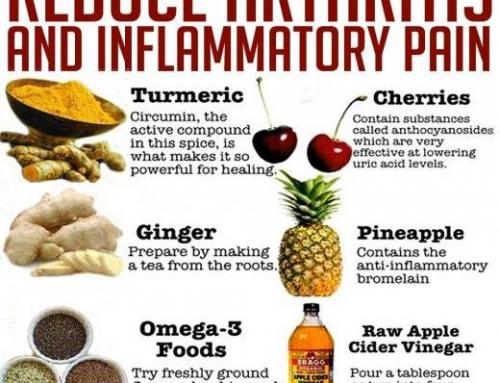R3 Stem Cell, the nation’s leader in stem cell marketing and research, recently sat down with Dr. Raj for a candid interview on stem cell therapy.
Here is the transcript of that interview:
Please give us a bit of your background.
I’m a board-certified orthopedic surgeon, certified in Canada, the U.S., and also in the United Arab Emirates. So I was born and raised in Canada. I’m an avid athlete, a baseball player in my younger days. So I understood athletic injuries, which led me to becoming an orthopedic surgeon. It was an easy conduit for me. In general, what I’ve seen is multiple injuries throughout my life. I mean in terms of surgeries, I’ve done well over 5,000 surgeries up to date, and in relatively short period of time. But my passion with all of this, is the newer technologies, such as stem cells and newer technologies even with surgeries and knee replacements. So, in general, I’m here in Beverly Hills, very humble, I’ve got a great practice. I’ve got A-list celebrities. I’ve got top athletes. And I’ve got your everyday person, who wants that same access.
What prompted you to get into regenerative medicine?
I’ll tell you exactly. Number one, is the holistic approach. Being Indian, we are not the stereotype. So, when you actually have an opportunity to not involve medications and not involve surgeries to treat an issue, why not? Number two, the fact is that two-and-a-half years ago, I had a high profile patient who looked at me and said, “Can you do stem cells on me.” And I looked at him and asked, “What are stem cells?” And then I did my research and then said, “There’s no way in hell I’m doing embryonic stem cells on you – you’ll get tumors, teratomas.” He said, “Look up this guy.” So there was Dr. Welling in Germany who did PRP, a version of PRP. It intrigued me because every one of this guys friends – Alex Rodriguez, Kobe Bryant – went off to Germany. I never ended up doing stem cells on him, but this prompted my interest and I looked into it, and that’s how I got into this world. So for me, there’s the in-between. As surgeons, we would look at medications, injections, and if that fails don’t come back or have surgery. So now we have that in-between. Now you have the opportunity of treating your own body with your own body’s products. It’s absolutely incredible. There’s no technology out there…. It causes a lot of controversy because people still think the world is flat and it’s actually round, going back thousands of years ago. I mean it’s that same phenomena.
How do you look at a patient and say that this person would be a good candidate for regenerative medicine procedures?
When I look at everyone, I have two different types of patients that come – one type of patient comes in and says, “Fix me.” The second type of person who’s actually afraid of surgery, afraid of procedures, and that’s most of us. Because as you know, it’s always that complication or that bad result that sings to the whole world. No one ever goes around saying, “Hey, I just had a great knee replacement,” and repeats it 100 times a year for the next twenty years – you don’t hear that. But if that one person had a bad complication with issues – sings about it. Same thing on the positive side of stem cells, people start singing about it. I know I’m right – I believe orthopedics now 50% of the surgeries that are being done are unnecessary, with this technology that’s handed to us, 50%. Most of our surgeries are inflammation-based – non-displaced tears in the shoulder, non-displaced meniscal tears, fractures that aren’t healing. We go in and we do these massive operations, and people get better or they don’t get better. But they all take a risk, they undertake the risk of general anesthesia and surgery. They undertake the risk of not getting better. If I told you, “You’ve got a shoulder issue – I can take care of you with minimal downtime, I could treat you with your own body’s products.” Y ou would jump on that in a second.
What have you seen in your treatments?
My success rate is well over 95%, and that 5% really is a person who absolutely will not try any surgery, and will give this a shot knowing that they’re not going to be fully better. So 95%, I carefully picked my patients too, on an indication of if someone is bone on bone – I can’t transform it, I can’t turn back time. If someone has a tear and one end of the tear is here and the second end is here, stem cells aren’t going to help. Anything that’s mechanically deranged, basically you need the surgeon for. So anything that’s not involving inflammation, that’s where stem cells come in, and the results have been incredible.
This is technology that makes sense. When we cut ourselves, when we break our bones, what heals all of this? We’ve had stem cells and platelets growth factors attract their stem cells to the site. These stem cells are pluripotent – they can become bone, they can become muscle, they can become skin. If we had no stem cells, this process doesn’t happen. I’m playing God. I’m taking a massive amounts of stem cells that your shoulder would never see, and your knee would never see, and i’m putting those stem cells in that site.
How potent is amniotic stem cells?
Amniotic stem cells are a great option for that person who doesn’t want their own bone marrow taken, simple as that. And the reality is, with amniotic stem cells, it’s a simpler procedure. That action could be done in office. I do my bone marrow procedures, as well as my partner Dr. Graf in the surgical center, because it should be respected as a procedure. So if you have those doctors or those facilities who do it in the clinic, you still risk infection, you still risk fracture of your crest. There are risks with this procedure, but it’s far less than surgery.
Where do you see this field going in the next decade?
I was the spokesperson in many ways, a leader, and that’s what I am right now. I have so many skeptics coming to me and say, “There’s no research behind it.” There IS research behind it. I mean there’s a Mayo study for two years ago that has an 80% success rate for bone marrow drawn stem cells for knee arthritis. I have people saying, “Well this is hocus-pocus.” And that’s the naïve person. I have people saying, “Why do stem cells when conventional orthopedics works?” If you actually internalize all three of those questions, you’ll realize that I’m right.
I see 50% of procedures being done now being obsolete. The thing is that people are smart enough to be preventative. If you know that you have knee issues, and you have mild arthritis, you get it earlier on – you’re only talking about a stem cell injection. You’re not talking about full knee replacements in the span of your lifetime. Huge difference. If you get your shoulder issue when it starts hurting a bit, again you’re talking about a simple stem cell injection, not a big massive tear that’s going to immobilize you for four months with physical therapy. I mean most of us – you take a construction worker, you take a cameraman, you take a surgeon, and you tell them their right hand’s going to be immobilized for months – who would do that if they could just have the stem cell procedure done earlier.





